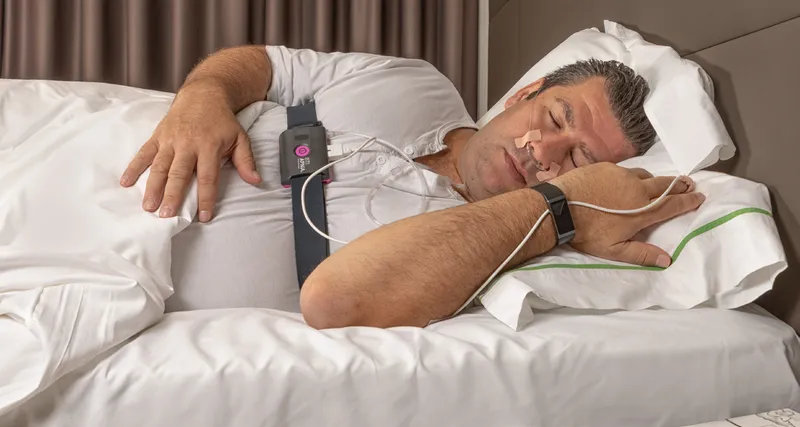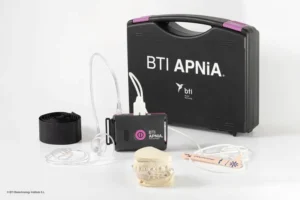Breathing machines, often referred to as ventilators, play a critical role in medical treatments, particularly for patients who are unable to breathe independently. These devices are designed to mechanically assist or completely take over the respiratory function of the lungs. They are utilized extensively in intensive care units, during surgery under general anesthesia, and in treatment of chronic conditions that impair respiratory function. This article delves into how these machines work, their different types, and the advancements in technology that enhance patient care.
Types of Breathing Machines
Breathing machines play a crucial role in managing various respiratory conditions. These machines provide essential support and alleviate symptoms for individuals suffering from obstructive sleep apnea, chronic obstructive pulmonary disease (COPD), and other respiratory ailments. Understanding the types of breathing machines available can help patients and healthcare providers make informed decisions about treatment options.
There are several types of breathing machines, each designed to address specific needs and conditions. The most common types include CPAP machines, BiPAP machines, and ventilators. Each of these machines operates differently and serves a unique purpose in respiratory care.

CPAP Machines
Continuous Positive Airway Pressure (CPAP) machines are primarily used to treat obstructive sleep apnea (OSA). They deliver a constant stream of air through a mask, keeping the airways open during sleep. This prevents episodes of apnea, where breathing temporarily stops, thus improving sleep quality and reducing the risk of complications associated with OSA.
CPAP machines are highly effective in managing sleep apnea symptoms. Studies have shown that consistent use of CPAP therapy can significantly reduce daytime sleepiness, lower blood pressure, and improve overall quality of life. Patients may need to try different mask styles to find the one that provides the best fit and comfort.
Some common benefits of CPAP machines include:
- Improved sleep quality
- Reduced daytime fatigue
- Lowered risk of heart disease
- Enhanced cognitive function
BiPAP Machines
Bilevel Positive Airway Pressure (BiPAP) machines are similar to CPAP machines but offer dual pressure settings. They provide higher pressure during inhalation and lower pressure during exhalation. This dual pressure system can be particularly beneficial for patients with respiratory conditions that make breathing more challenging, such as COPD.
BiPAP machines are often used when patients have difficulty tolerating CPAP therapy. The variable pressure settings can make breathing feel more natural and comfortable for some individuals. BiPAP therapy has been shown to improve symptoms of COPD and other respiratory disorders by enhancing ventilation and reducing the work of breathing.
Key advantages of BiPAP machines include:
- Enhanced comfort due to variable pressure settings
- Better support for patients with complex respiratory conditions
- Improved compliance with therapy
Ventilators
Ventilators are advanced breathing machines used in critical care settings to support patients with severe respiratory failure. These machines can fully or partially take over the work of breathing for patients who are unable to breathe adequately on their own. Ventilators can be life-saving devices in cases of acute respiratory distress syndrome (ARDS), severe COPD exacerbations, and other critical conditions.
Modern ventilators are equipped with sophisticated features that allow for precise control of ventilation parameters, such as tidal volume, respiratory rate, and oxygen concentration. This precision helps optimize patient care and outcomes in intensive care units (ICUs) and other medical settings.
Ventilators can be categorized into:
- Invasive ventilators, which require a tube inserted into the patient’s airway
- Non-invasive ventilators, which use masks to deliver breathing support
The use of ventilators requires close monitoring and expert management to ensure patient safety and efficacy of treatment. Ventilators are critical tools in the arsenal of respiratory care, providing essential support for patients with life-threatening respiratory conditions.
Understanding the different types of breathing machines is essential for selecting the right device for each patient’s needs. For more in-depth information on respiratory therapies and to explore the latest advancements in respiratory care, continue exploring our other articles.
Benefits of Using Breathing Machines
Breathing machines, also known as CPAP (Continuous Positive Airway Pressure) machines, have revolutionized the treatment of sleep-related breathing disorders. These devices are most commonly used to manage obstructive sleep apnea (OSA), a condition where a person’s airway becomes blocked during sleep, leading to repeated interruptions in breathing. By providing a steady flow of air, these machines help keep the airways open, ensuring continuous and uninterrupted breathing. The benefits of using breathing machines extend beyond merely treating OSA; they also contribute significantly to overall health and well-being.
Numerous studies have shown that using breathing machines can lead to significant improvements in various aspects of life. These include better cardiovascular health, enhanced cognitive function, and a reduction in the risk of diabetes. Furthermore, improved sleep quality and enhanced breathing efficiency can have a cascading effect on an individual’s daily performance, mood, and general quality of life. This article delves deeper into two primary benefits of using breathing machines: improved sleep quality and enhanced breathing efficiency.
Improved Sleep Quality
One of the most immediate and noticeable benefits of using a breathing machine is the marked improvement in sleep quality. Individuals suffering from obstructive sleep apnea often experience frequent awakenings throughout the night due to the repeated cessation of breathing. This fragmented sleep pattern results in poor sleep quality, leaving individuals feeling exhausted and fatigued during the day. By utilizing a CPAP machine, the airway remains open, allowing for continuous and uninterrupted sleep.
Improved sleep quality has far-reaching implications. Studies have consistently shown that adequate, restful sleep is essential for overall health and well-being. Higher sleep quality contributes to improved emotional stability, better memory retention, and enhanced concentration abilities. Moreover, those who use breathing machines report feeling more revitalized and less irritable during the day, which can significantly enhance personal relationships and daily productivity.
With continuous positive airway pressure, individuals can achieve the deeper stages of sleep necessary for bodily repair and growth. This not only rejuvenates the body but also promotes optimal mental health. As a result, individuals using breathing machines often notice a substantial improvement in their overall quality of life.
Enhanced Breathing Efficiency
Another critical benefit of using CPAP machines is enhanced breathing efficiency. For individuals with obstructive sleep apnea, the condition often leads to episodes of paused breathing or shallow breathing, which can result in decreased oxygen levels in the blood. Breathing machines help maintain open airways, ensuring that sufficient oxygen enters the lungs and is subsequently delivered to the rest of the body.
Enhanced breathing efficiency means that the body’s tissues receive the oxygen they need to function optimally. This is particularly important for cardiovascular health, as the heart relies heavily on a consistent oxygen supply. Studies have shown that using breathing machines can reduce the risk of heart disease, hypertension, and stroke, all of which are associated with obstructive sleep apnea.
Moreover, enhanced breathing efficiency contributes to better physical performance and endurance. With an adequate oxygen supply, individuals are more likely to engage in physical activities and lead an active lifestyle, further improving their overall health. Enhanced breathing efficiency also helps reduce the strain on the respiratory system, making breathing less labored and more effortless during both rest and activity.
In conclusion, the benefits of using breathing machines, such as improved sleep quality and enhanced breathing efficiency, are profound and multi-faceted. These devices not only address the immediate symptoms of obstructive sleep apnea but also contribute to long-term health and wellness. For those interested in learning more about related topics, consider exploring articles on the connection between sleep and mental health, or the impact of respiratory health on overall well-being.
How Breathing Machines Work
Breathing machines, also known as ventilators, play a crucial role in modern medicine by helping individuals who are unable to breathe unassisted. These machines have become essential in intensive care units, emergency rooms, and even at home for patients with chronic respiratory conditions. Understanding how breathing machines work can provide valuable insight into their importance in healthcare.
At a high level, breathing machines function by delivering a carefully controlled airflow to ensure that the patient maintains adequate oxygen levels and expels carbon dioxide efficiently. They are designed to mimic the natural breathing process as closely as possible, providing support to the respiratory system.
The key components of a breathing machine include a pump to generate pressurized air, a monitoring system to track the patient’s respiratory parameters, and a power source to ensure continuous operation. Let’s examine each of these components in detail.
Flow of Pressurized Air
The primary function of a breathing machine is to provide a consistent flow of pressurized air to the patient’s lungs. This air is typically enriched with oxygen to enhance blood oxygenation. The pressurized air can be delivered through a variety of interfaces, such as a mask or a tube inserted into the patient’s airway.
There are different modes in which a ventilator can operate. These include:
- Volume-controlled ventilation, where a predetermined volume of air is delivered with each breath.
- Pressure-controlled ventilation, where the machine adjusts the airflow to maintain a set pressure within the lungs.
- Assist-control ventilation, which assists the patient’s spontaneous breaths while providing complete breaths if necessary.
Each mode is selected based on the patient’s specific needs and medical condition. Such versatility ensures that the ventilator can be tailored to provide optimal respiratory support.
Monitoring Systems
Modern breathing machines are equipped with sophisticated monitoring systems that track a range of respiratory parameters in real time. This ensures that the machine adjusts its operation dynamically to meet the patient’s changing needs. Key parameters monitored include:
- Respiratory rate, which measures the number of breaths per minute.
- Tidal volume, the amount of air delivered to the lungs with each breath.
- Oxygen saturation, the level of oxygen in the patient’s blood.
- End-tidal carbon dioxide, the amount of carbon dioxide expelled at the end of exhalation.
These parameters are crucial for assessing the patient’s ventilation status and ensuring that the machine’s operation is optimized. Alarms and alerts are also integrated to notify healthcare providers of any deviations from the expected range, facilitating prompt intervention if needed.
Power Sources
Ensuring that a breathing machine has a reliable power source is critical, particularly in emergency and intensive care settings. Most ventilators are designed to operate using electricity, but they also include backup power options to maintain functionality in case of power failures.
Backup power sources can include:
- Internal batteries, which allow the machine to continue operating for a specified duration when the main power supply is disrupted.
- External battery packs, which can provide extended power during longer outages or while transporting patients.
- Manual ventilation options, such as hand-operated resuscitators, which can be used in extreme situations.
Having multiple power sources ensures that the breathing machine can deliver consistent and uninterrupted respiratory support, safeguarding the patient’s health even in unpredictable circumstances.
Understanding these fundamental aspects of how breathing machines work highlights their importance in saving lives and enhancing patient care. For more detailed articles on related topics, be sure to explore our other posts.
Choosing the Right Breathing Machine
When it comes to selecting a breathing machine, also known as a CPAP (Continuous Positive Airway Pressure) machine, it can be overwhelming given the numerous options available. Making an informed choice is crucial to ensure the machine meets your needs and helps improve your quality of life. This guide aims to simplify the process and assist you in choosing the right breathing machine for your specific requirements.
There are several factors to consider, such as the machine’s features, your medical condition, and your lifestyle. By understanding these elements, you can make a more educated decision that benefits your health in the long run. Here, we will delve into the key aspects you need to think about when choosing a breathing machine.
Assessing Your Needs
The first step in selecting a breathing machine is to assess your needs. This involves understanding your specific medical condition and how it impacts your breathing. For instance, if you have sleep apnea, a CPAP machine can help keep your airway open during sleep, preventing interruptions in your breathing. Evaluate how severe your condition is and what features you might require.
Consider lifestyle factors that might influence your decision. For example, if you travel frequently, a more portable machine might be beneficial. Also, think about the noise level: some machines are quieter than others, which might be important if you are a light sleeper or if you share a room with someone.
Make a list of your needs and preferences. Some questions to ask yourself include:
- Do I need a portable machine?
- How important is noise level?
- Do I require specific settings or features?
- What is my budget?
Having a clear understanding of your needs will help narrow down your options.
Consulting a Healthcare Provider
Before purchasing a breathing machine, it is essential to consult a healthcare provider. Your doctor or a specialist in respiratory therapy can offer professional advice tailored to your specific medical condition. They can perform tests to determine the severity of your condition and recommend the type of machine that would be most beneficial for you.
Healthcare providers can also guide you on how to use the machine effectively. Proper usage is crucial for achieving the desired health benefits. They may offer a trial period with a rental machine to ensure it meets your needs before you make a purchase. This can be especially useful if you are unsure about which machine to choose. Additionally, your healthcare provider can help you understand any potential side effects and how to mitigate them. This ensures that you are fully prepared to integrate the breathing machine into your daily life seamlessly.
Understanding Features
Breathing machines come with a myriad of features designed to cater to different needs. Understanding these features is essential for making an informed decision. Common features include adjustable pressure settings, humidifiers, and different mask options. Adjustable pressure settings allow you to customize the machine to your comfort level, enhancing its effectiveness.
Humidifiers are another crucial feature, especially if you live in a dry climate or experience dryness in your nasal passages. They add moisture to the air, making it easier to breathe and reducing discomfort.
Mask options also play a significant role in your comfort and the machine’s effectiveness. Options include nasal masks, full-face masks, and nasal pillow masks. Each type has its pros and cons, so it’s important to try different options to find what works best for you.
Some advanced machines also offer data tracking and connectivity features. These can provide insights into your sleep patterns and the machine’s effectiveness, which can be shared with your healthcare provider to make necessary adjustments. This level of personalization can significantly improve your treatment outcome. Choosing the right breathing machine is a crucial step towards better health. By assessing your needs, consulting a healthcare provider, and understanding the features, you can make an informed decision. For more information on related topics, consider reading our other articles that delve deeper into respiratory health and machine maintenance.
Common Questions about Breathing Machines
If you’re new to the concept of breathing machines, you may have several questions regarding their use, benefits, and functionality. Here’s a frequently asked one to help you understand more:
How does a breathing machine help someone with respiratory issues?
A breathing machine, commonly known as a ventilator, aids individuals who are unable to breathe adequately on their own by delivering air into their lungs. This machine can adjust the pressure, volume, and rate of airflow, ensuring that the patient receives the appropriate amount of oxygen based on their medical needs and condition.

My name is Salman Kapa, a 73-year-old expert in bone regeneration and dental implantology. With decades of experience in the field, I am dedicated to advancing our understanding of oral health and hygiene. Through my research and writing, I aim to contribute to the development of innovative solutions in dental care.




